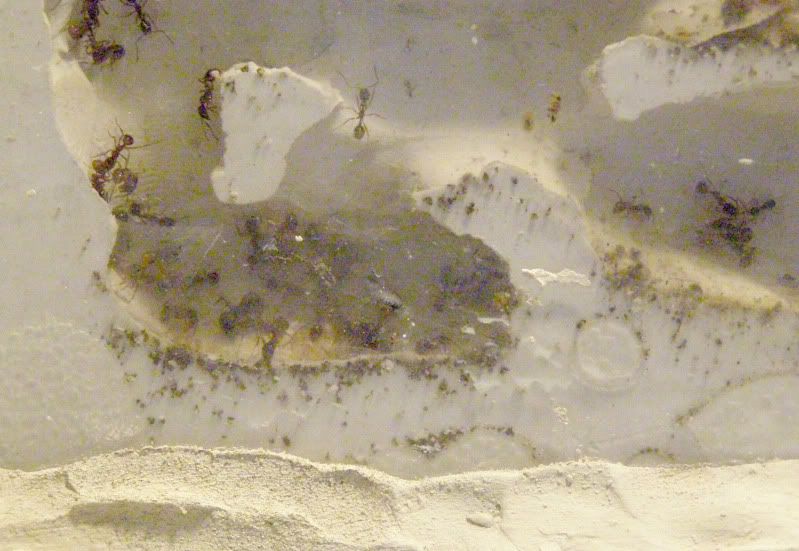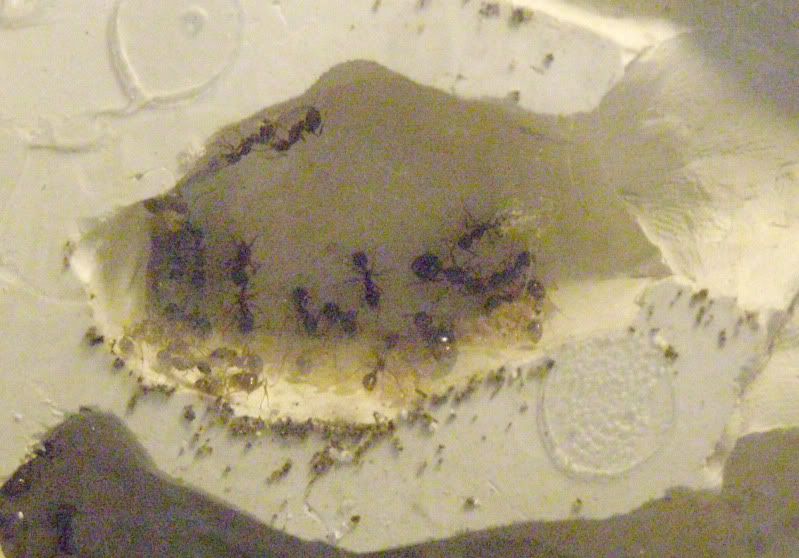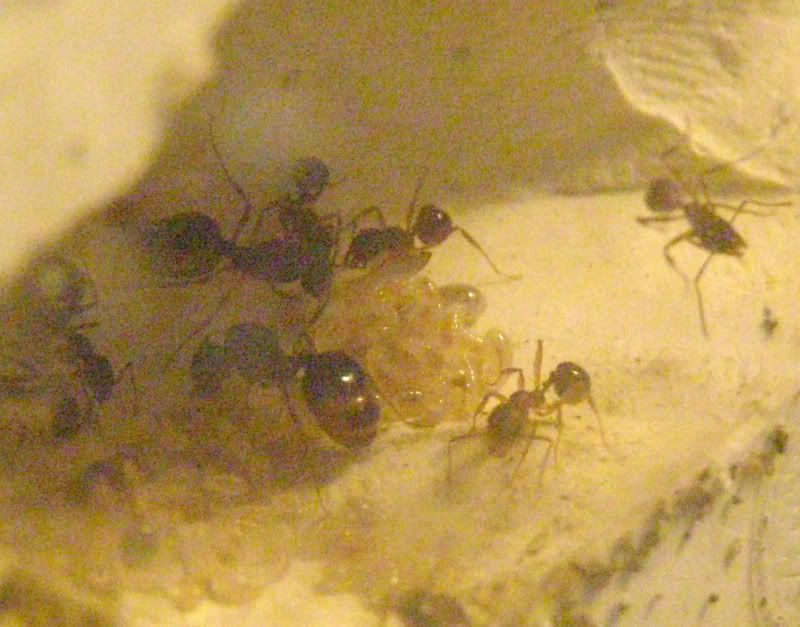Considering that the ants are already in the environment one wonders why they bother taking to the skies at all. Well some species actually don't fly or do so pretty low to the ground. Mating can even be seen taking place on the ground. Some Myrmica species, I believe (I could be wrong), actually don't fly very far at all. The queens will climb tall blades of grass and simply fan pheromones with their wings to attract males down. Once mating the queens remove their wings and simply wonder around looking for a nest. They're usually not messed with either because many Myrmica species are armed with a violent sting. It's nothing compared with Fire Ants or our Western Harvester Ants but it works!
I had herd once that Myrmica tend to be more common at higher elevations. I believe this on the ground mating might have something to do with it. Heavy winds would surely blow most other ants away, but here on the ground mating seems to be a success.
Breeding inside the colony itself isn't uncommon. I've seen many Tetramorium caespitum and Crematogaster cerasi queens leaving the colonies already mated with. Dig up a colony of Monomorium minimum and you'll likely find dozens of queens. The invasive Pharaoh Ant, Monomorium pharaonis, actually divides it's colonies instead of even bother with a nuptial flight. This makes them a very troublesome pest.
Recently it was found that the fungus growing ant Mycocepurus smithii simply clones itself. There is no male caste at all.
So the question is, how to exploite breeding in captivity. As it turns out it may not be as hard as it sounds.

Over the spring I caught a colony of Aphaenogaster out in the yard. Along with workers, and queen, was the over wintered brood. This brood for this particular ant is the only type that can develope into alates. The colony went on to produce 3 new queens, a few males, and are now producing workers regularly. The odd thing I noticed one day though was that the queen's had removed their wings, and some of the males had died. Apparently they'd bred in captivity within their nest.

Breeding in the colony is usually not allowed by the workers but the colony had been stressed some and workers weren't in abundance. The problem is I didn't witness the act of mating and can't say that they're mated with at all. Removing their wings might have simply been a responce captivity. If the colony starts producing a number of males throughout the summer I'll know.

Currently I'm having trouble telling which queen is the original to the colony, but I can't help but wonder if this captive mating was done on purpose. The colony had less than 100 workers. Many had died from the usual complications of getting a nest: workers attacking one another in confusion, accidential damage, old age.
Had the colony been bigger when this happened I can't say that the alates would have mated. But if they did and the colony was healthy I probably could have split it one or more ways. That aspecit is intreging.
A few days ago I witnessed a miniture nuptial flight in action. The left over males in the colony were attempting to fly off. This suggests that breeding in the colony and holding nuptial flights can both happen in a single species. I can't help but wonder that allowing the queens to breed may have been done in responce to the low number of workers. 4 queens are better than 1. The actual cause is still unknown of coures, it could just be the expansive space of the plaster setup they've yet to fill.
Assuming this colony can be maintained and goes on to produce queens next year I can't wait to see if they do it again. I'll have more room to experement some that is.
In Europe Ant Stores are possable because the some of the people have perfected methods of artificial insimination. Methods originally devised for Honey Bees are now taken to a much smaller scale and carefully queen ants are selectively bread. This is clearly a better method but a large humber of queens would be needed to perfect what they were doing. And of course not all species of ants produce reproductives in captivity.
To conclude captive breeding is still in need of work, but there are methods and situations that allow it to happen.